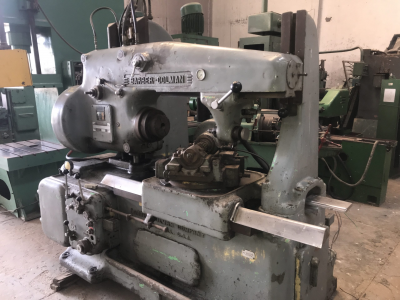I worked a summer in a gear manufacturing plant as QC. I studied this stuff all night after work and still don't understand it all. I'll try to hit the big ones and forgive me if someone comes along and corrects me.
It appears that you have external spline hobs rather than gear hobs. Same concept but they're used to add splines to shafts rather than gear teeth. There are many kinds of splines such as involute (most common), parallel key, and serrated splines. Any of these can be straight tooth (most common) or helical (used in high load applications). You also get to determine if the tooth meets the root with a fillet or a sharp corner. Fillet roots need deeper teeth so the strength of the shaft interface is roughly the same in both cases.
Involute splines, like gears, have a diametral pitch (or module) and pressure angle. The diametral pitch determines the size and count of teeth for a given diameter, while the pressure angle determines the line of contact through a mating tooth relative to the tangent line at that point. In gears, 14* and 20* are the most common, while 30* is most common in splines.
Spline tolerance is usually indicated by Class 4,5,6, or 7. One of your hobs indicates class "A" which doesn't ring a bell.
The hob may finish the full profile (root, tooth, crest), or only the root and tooth. Sometimes splines are roughed with one hob and finished with a second as the full profile hob experiences higher cutting forces.
The hob has a lead which refers to the rate at which the profile wraps around the hob. This is needed to understand how to configure your hobbing machine to properly cut the spline. There is also a flute angle which talks about the gash angle and the resultant cutting forces.
I believe the hob at the top (yellow tag) is an involute spline hob with a 30 degree pressure angle and a 2 degree RH gash. It is labeled as a finishing, non-topping, flat root hob.
I believe the pink hob is a parallel spline hob, with a 3 degree 4 minute gash, 129.63mm lead.
Hobbing is a deep subject and each and every tool is nearly custom. You don't see many manufacturers carry a standard inventory. They are also very expensive and are resharpened many times over. I know the company I worked for rented many of the hobs they used from Gleason since they did not do enough volume to justify the purchase of the hobs.
You need a dedicated hobbing machine (e.g. Barber Coleman) with the full set of change gears to be effective in setting up a hobbing operation. If you think your lathe is bad, each machine could have 50+ change gears (and they are big!). I saw one or two sets of gears shared between many machines since they were not all needed at once. The change gear tables are also intimidating since you are changing in 8-10 gears at a time to build up the proper gear ratio.
